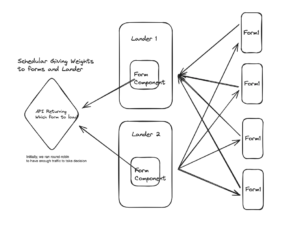Twelve years ago, when I decided to publish my blog on partial rendering, it was not a common practice except among Ruby on Rails developers. Back then, we called it Ajax-based partial loading. Since then, my blog has continued to use this technique.
Requirements (Simplified Version)

A few years ago, we aimed to build a lead generation system for flight arbitrage. The requirements were to quickly deploy landing pages, run A/B tests, and automate backend processes based on click-through rates (CTR) to promote winning landing pages. Each landing page needed to load different forms based on conversion rates.
See more about Flight Arbitrage System
Rendering Technique
After some research and development, we chose NuxtJS to render our landing pages. We decided to use single-page components, where each form is a single-page component loaded within a Nuxt page. The appropriate form is determined by an API endpoint.
Deployment and Achieving Results
We used AWS S3 buckets to host compiled versions of static sites with the compiled forms. These forms load based on IDs from the API. This simplified version of our setup illustrates how selecting the right rendering techniques and framework made the project maintainable and scalable.
If you want to learn more about rendering techniques, I recommend watching this excellent video that explains the history and modern solutions for rendering. It will help you make informed decisions based on your requirements.